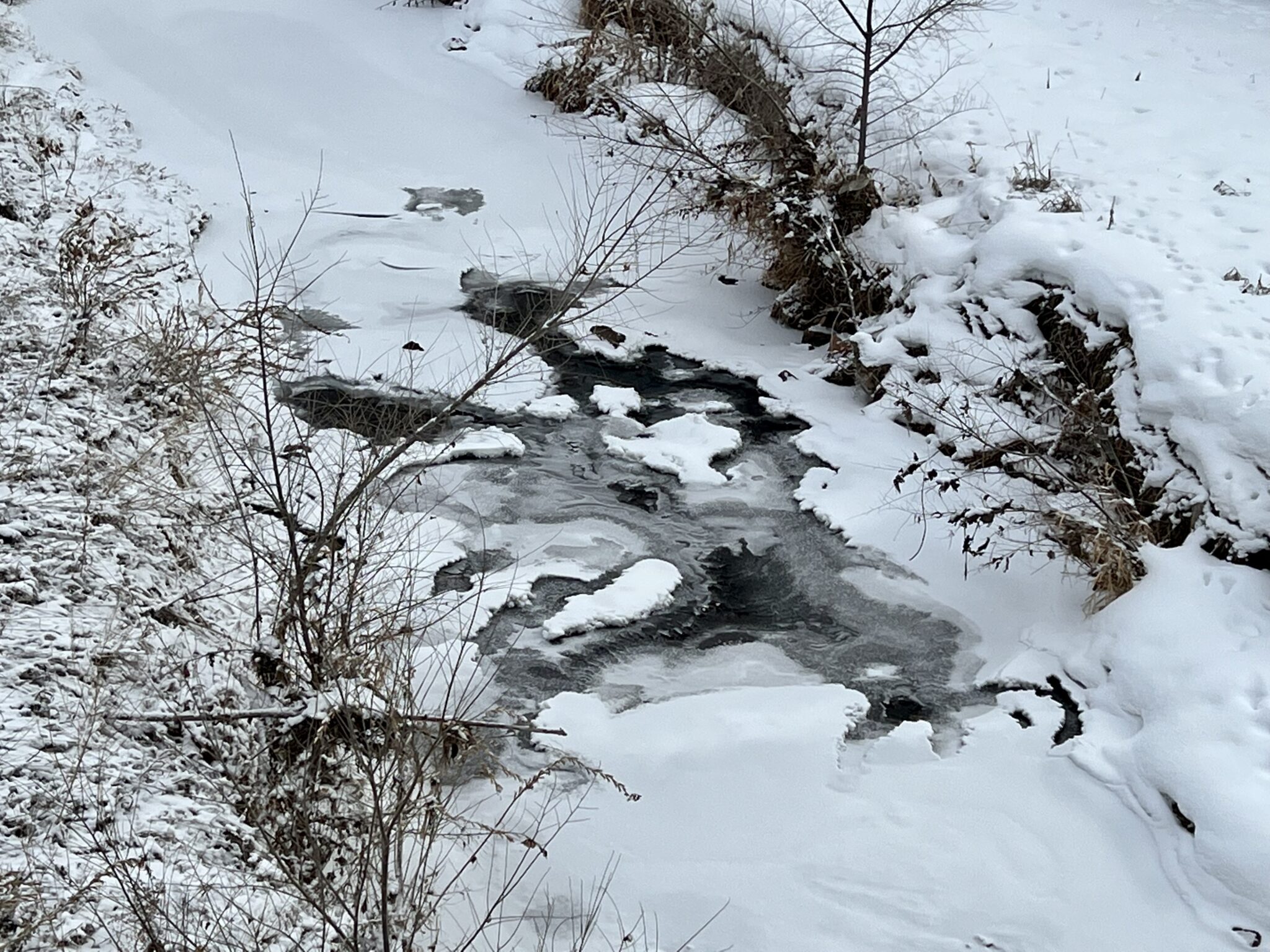
I love winter fishing. For the same reasons the warm-blooded amongst us do: fewer crowds, less pressure on the fish, no biting insects, and just overall quiet solitude–serenity amidst a white, Norman Rockwell blanket of snow.
Of course, there are also downsides to winter fishing. Here in Colorado, many of the smaller streams get completely frozen over and you’d be better off donning ice skates than waders. I’m not a fan of fishing “ice slots” with their jagged edges and micro-icebergs floating down with all the impunity of summertime tubers.
The rule is snagged flies, roughed up lines, and shredded tippets. All of which can also freeze solid, making it frustrating to cast (at least we don’t have iced-up guides to contend with). Then there are snags. It seems like every chunk of frozen flotsam has a magnet that reels in your fly like a tractor beam. And, of course, the colder water temps can make the fish lethargic, so expectations of catch rates are typically lowered.

So, for these reasons (as well as local fishing regulations) winter has earned the moniker of “tying season”–a chance to hunker down and restock favorite flies that dwindled over the warmer months. I fish all year round, so for me, there is no “season”.
Of course, there are times when the weather is so brutal and the ice chunks are so merciless, that it might make more sense to stay home, grab a hot cup of coffee and turn your attention to other fishing related chores such as gear maintenance, experimentation, casting practice, repairs, research, etc.
In 2016, I wrote a short article on 10 things to do when you can’t go fishing (that are still fishing related) to help people make it through the winter doldrums. We’ve been in a deep freeze here recently (with more on the way) and to avoid late-stage cabin fever, I’m taking my own advice.
So here are a few of the little projects I’ve been doing this year to stave off the winter blues.
Tying Flies
It’s called the “tying season” for a reason. I’ve been tying a lot lately for myself (filling in staples), for custom orders, and experimenting with some new-to-me “outsider materials”. For me, tying is the next best thing to fishing. It’s my creative outlet that helps me maintain some semblance of sanity. I’ve always said that even if every stream on Earth dried up, I’d still tie flies.
For one thing, I’ve changed the recipe for my Ichiban Kebari to use real silk thread instead of conventional polyester thread. So, I’m in the process of retying and replacing my main stock with the new, improved version.

I found a new source for eyeless hooks in black nickel and gold finishes that seems promising. They’re barbless and incredibly cheap though definitely not as sharp as a Daichi or Gamakatsu. But one or two quick swipes with a hook hone and they’re needle sharp.
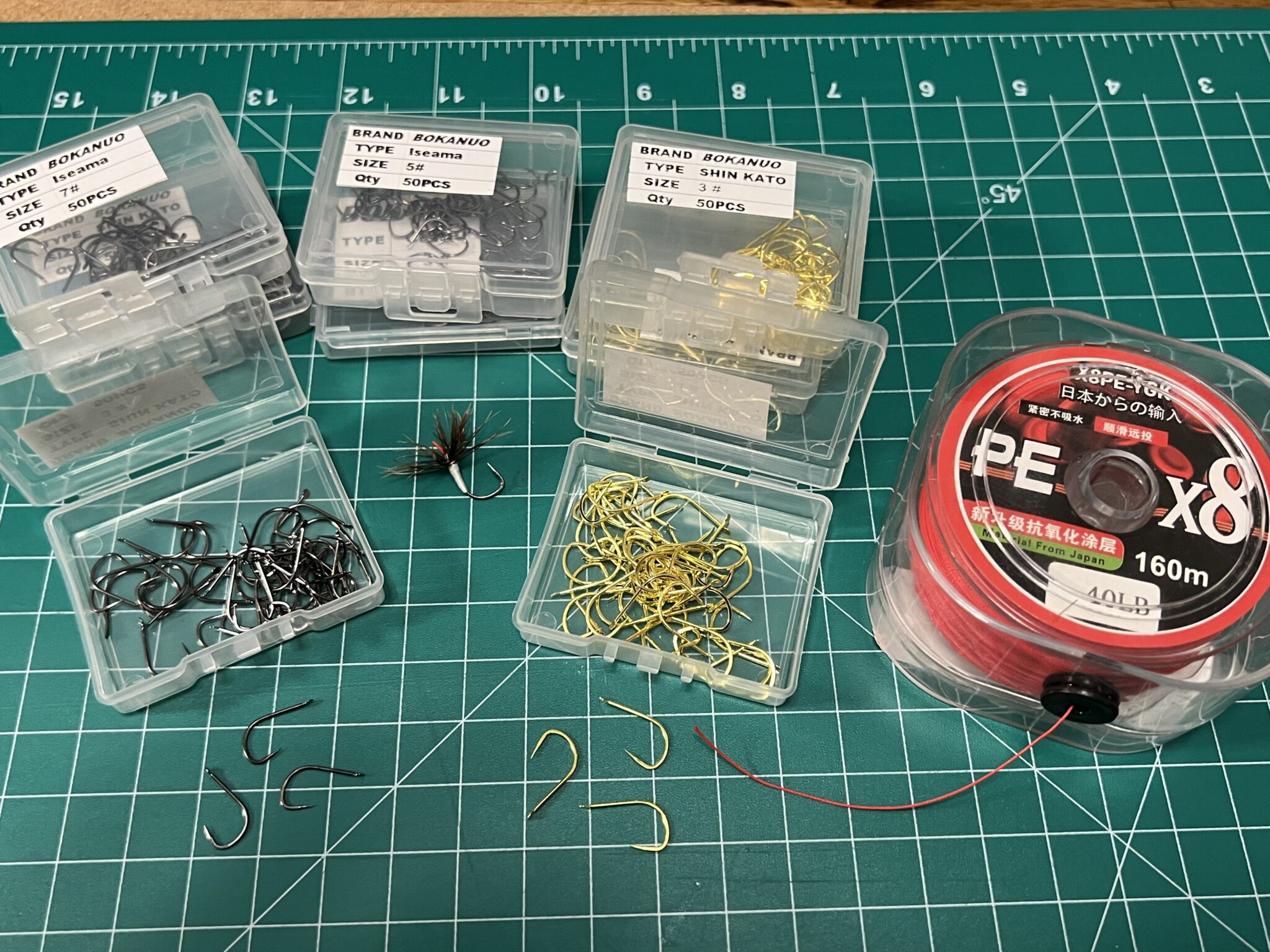
The bend has a very “tenkara” look to it.

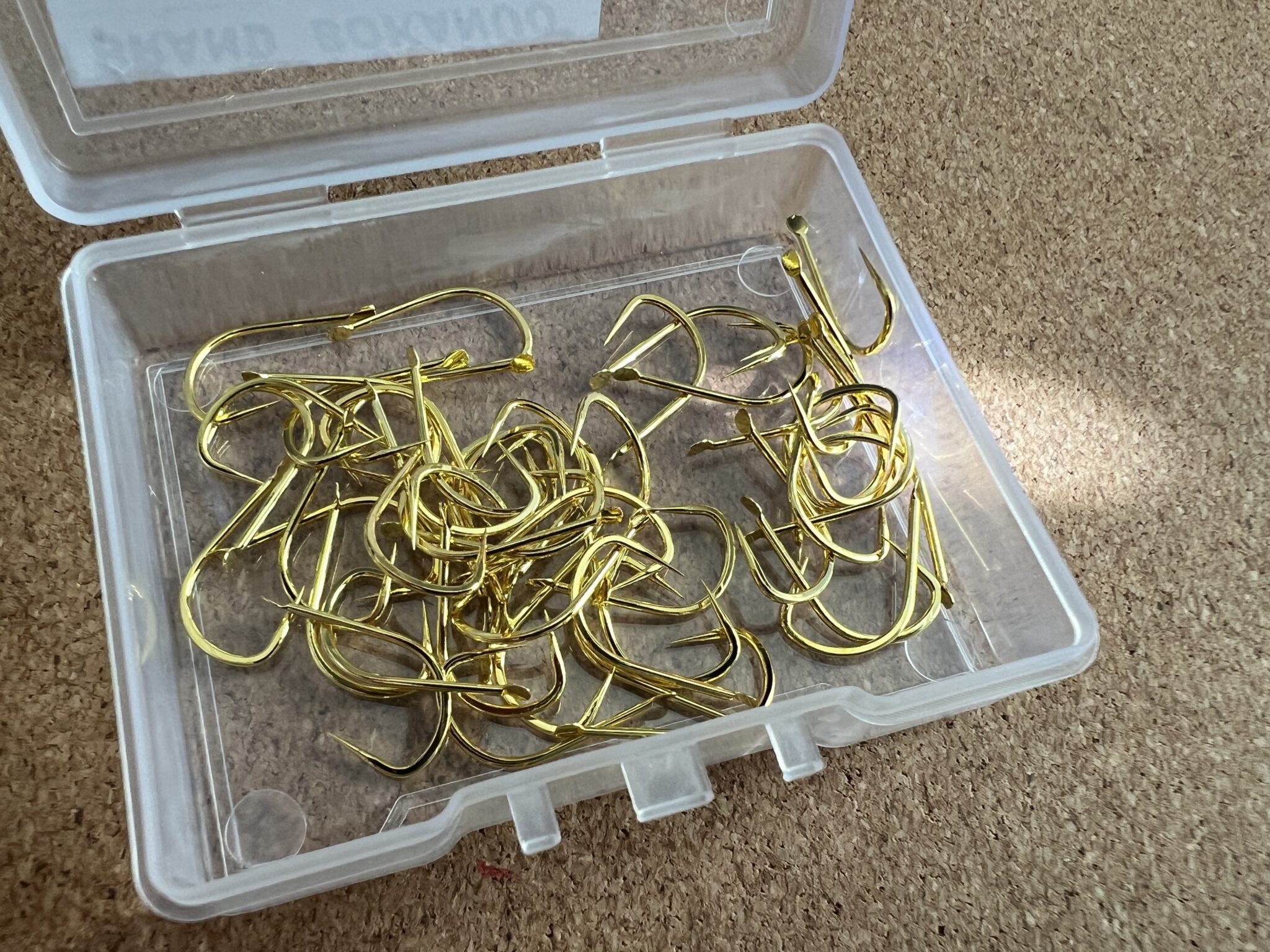
I like the way an Amano kebari with silk thread looks on these hooks and the wheels are turning–I already have a million other ideas.

And speaking of eyeless hooks, I’ve been playing with different types of lines to form loops on them. So far, 8-12 strand braided PE line seems to be the winner. I got it a little thinner in diameter than the typical silk bead cord many use and it has a tighter weave so it doesn’t twist or unravel as much.

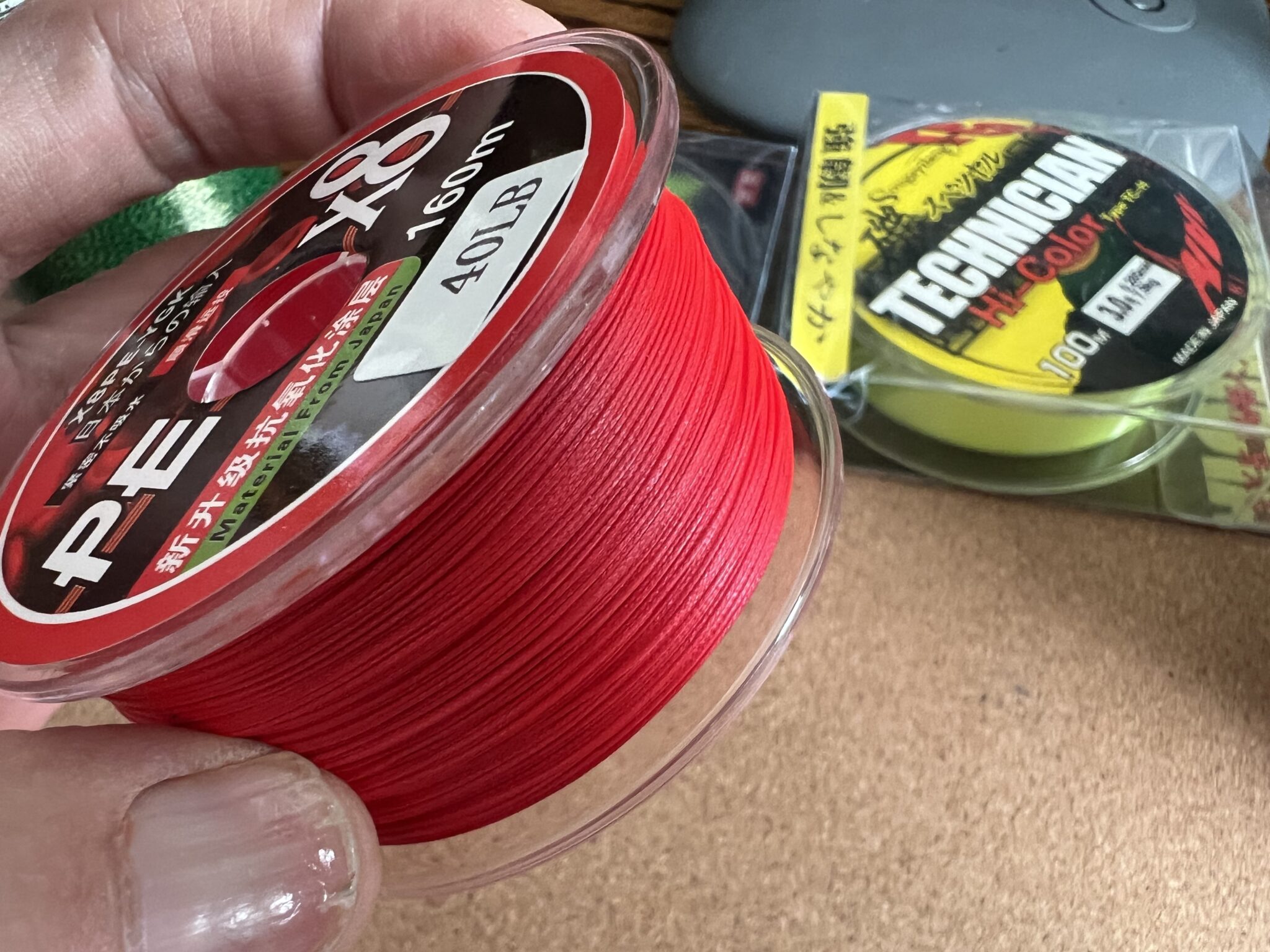
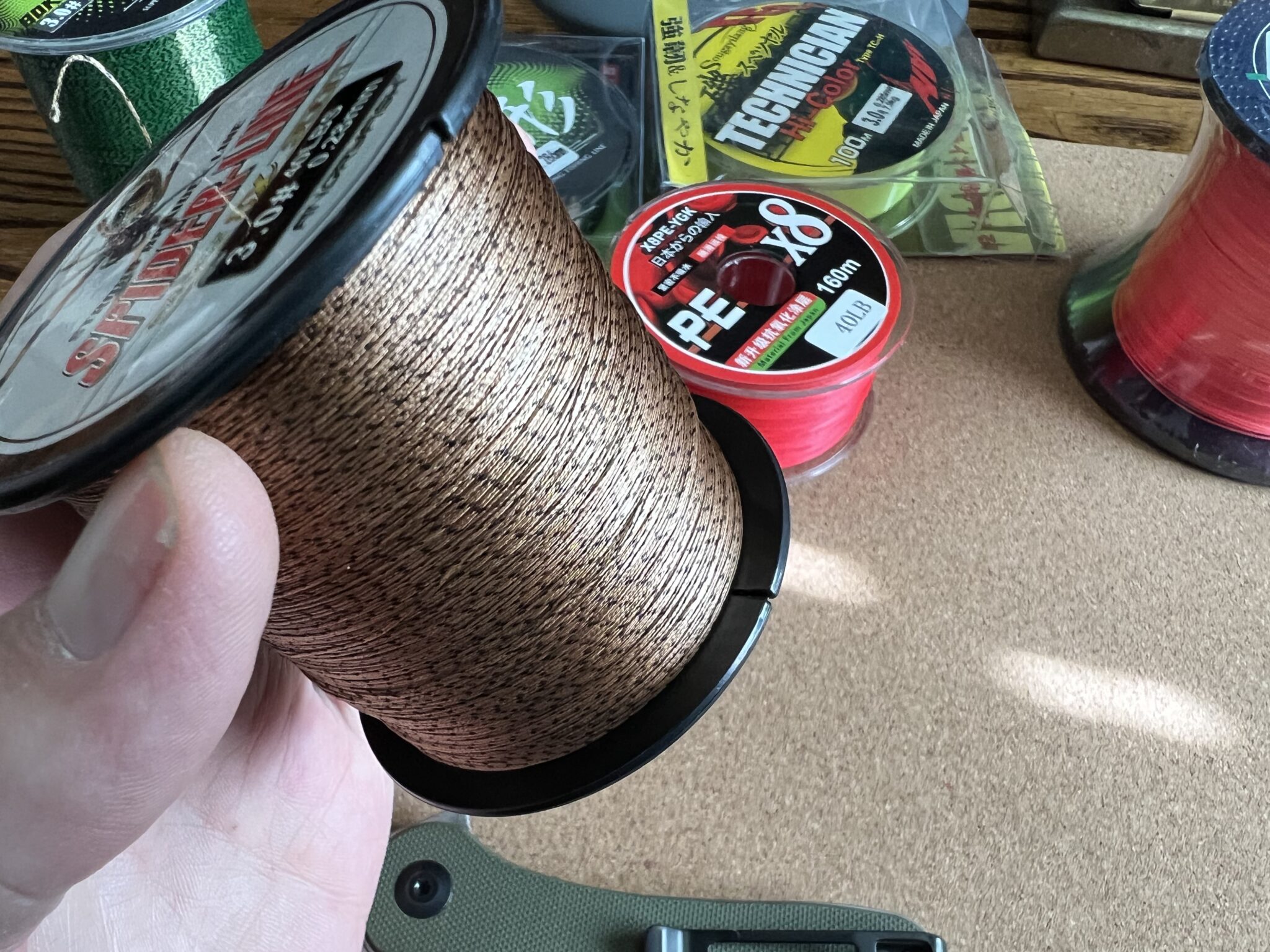
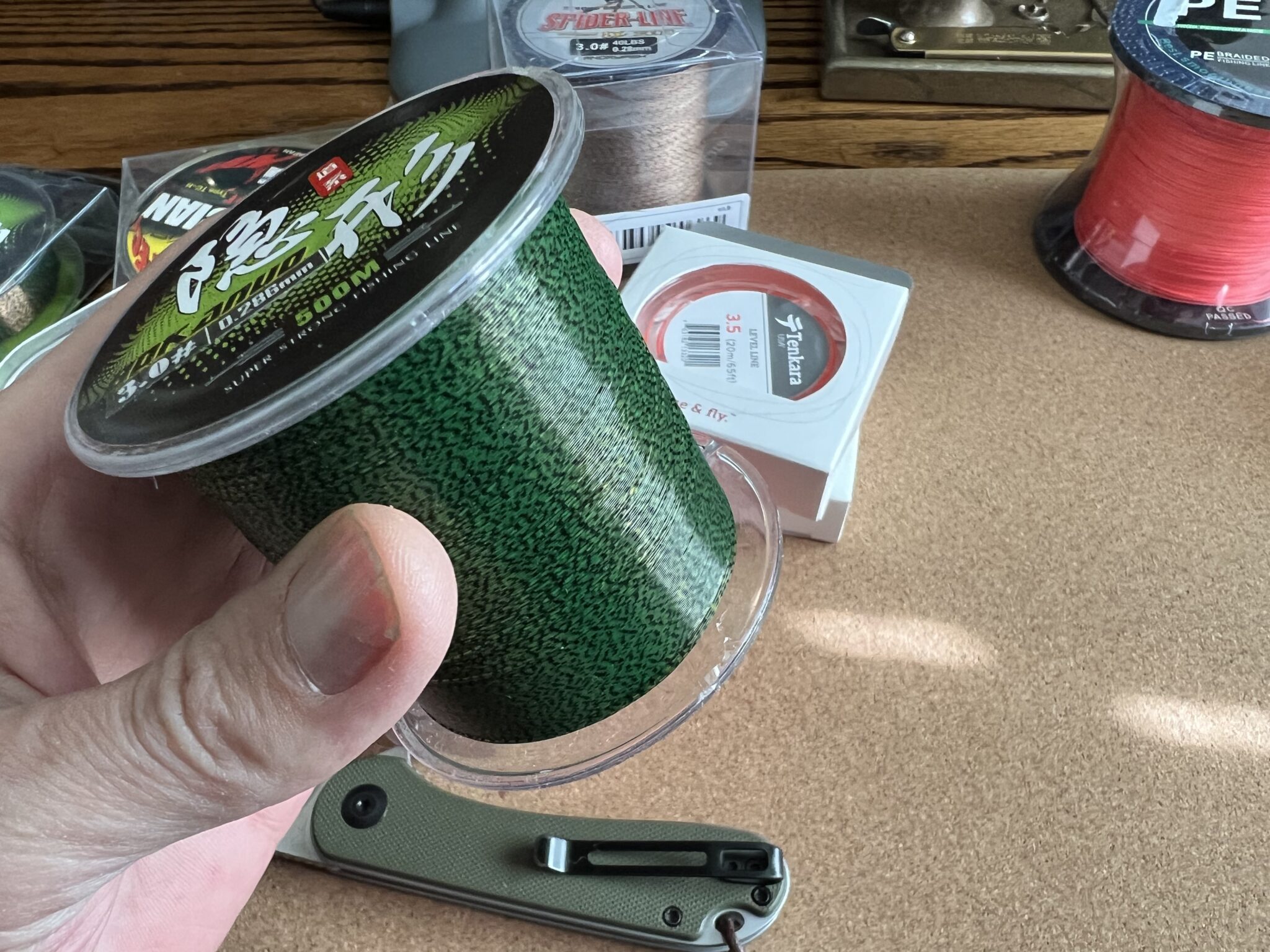
Making Custom Dubbing
If you saw my recent video on how to blend your own dubbing, you’ll know I’ve been having fun making custom mixtures such as the elusive Tups Indispensable dubbing.

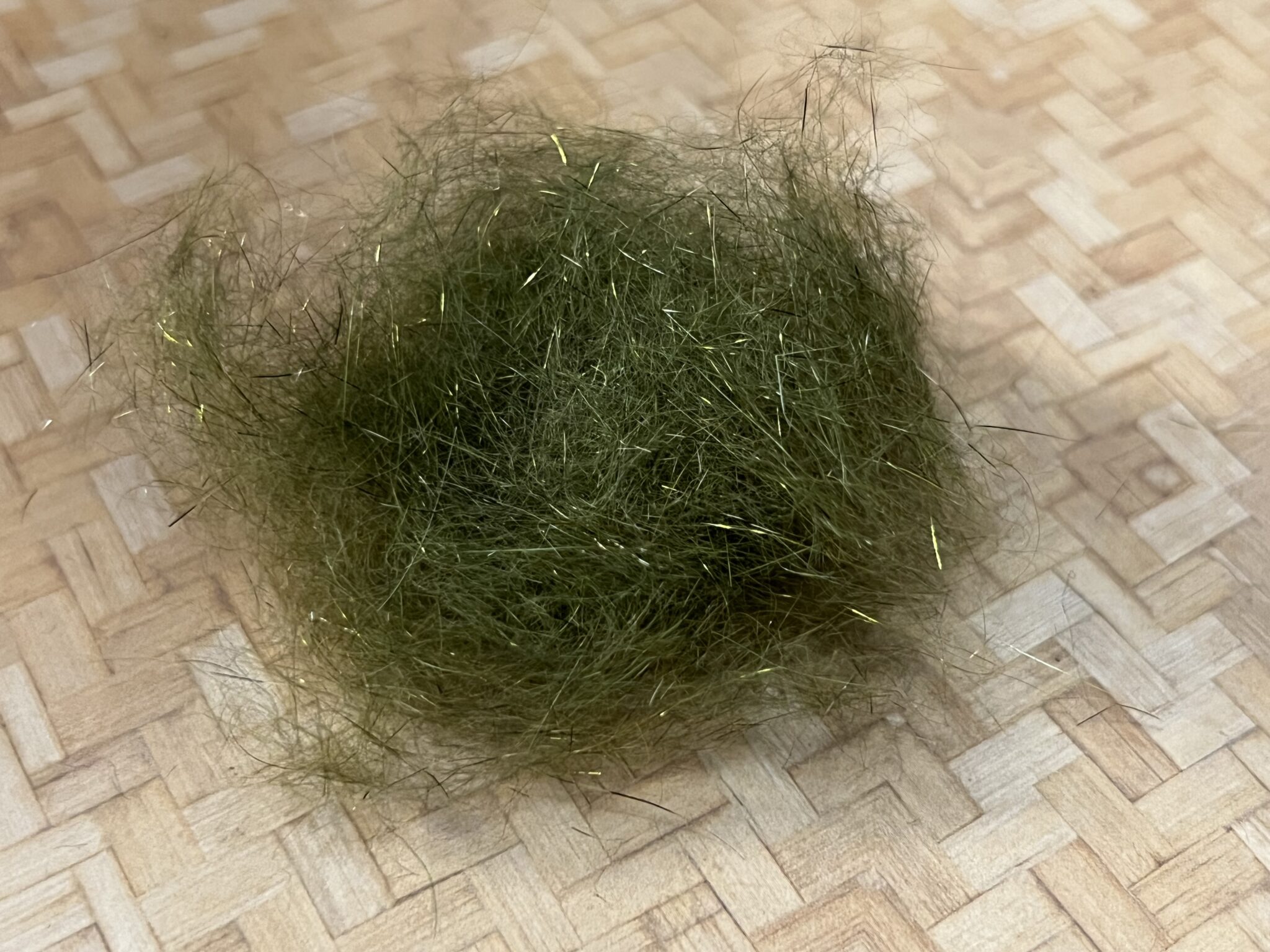
And, I’ve been experimenting with dying some materials using (of all things), Kool-Aid. Believe it or not, it works! But I’m discovering that dying is an art in itself and I’m not sure how far I really want to go down that rabbit hole. Wait. I just read that last sentence again. “Dying is an art in itself.” Doesn’t that sound like the perfect lyric for a song by some morbid 80s alternative band?
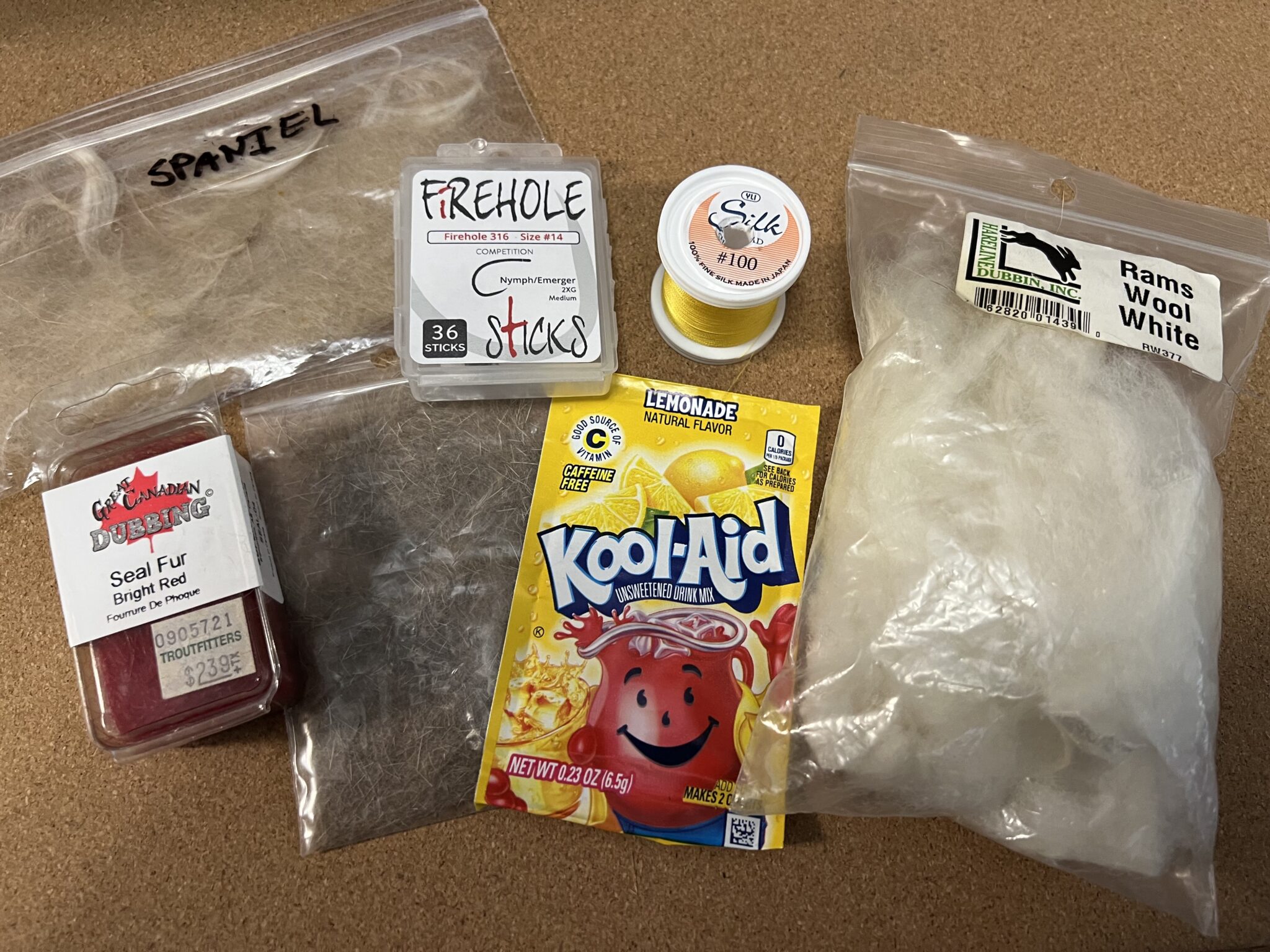
Taking Inventory
I’ve been going through my hook drawers and threads to see which sizes and models need to be restocked since these are the things I run out of most at the tying desk. It drives me crazy to get all excited about tying a specific pattern, only to find I’m out of the right hook for it.
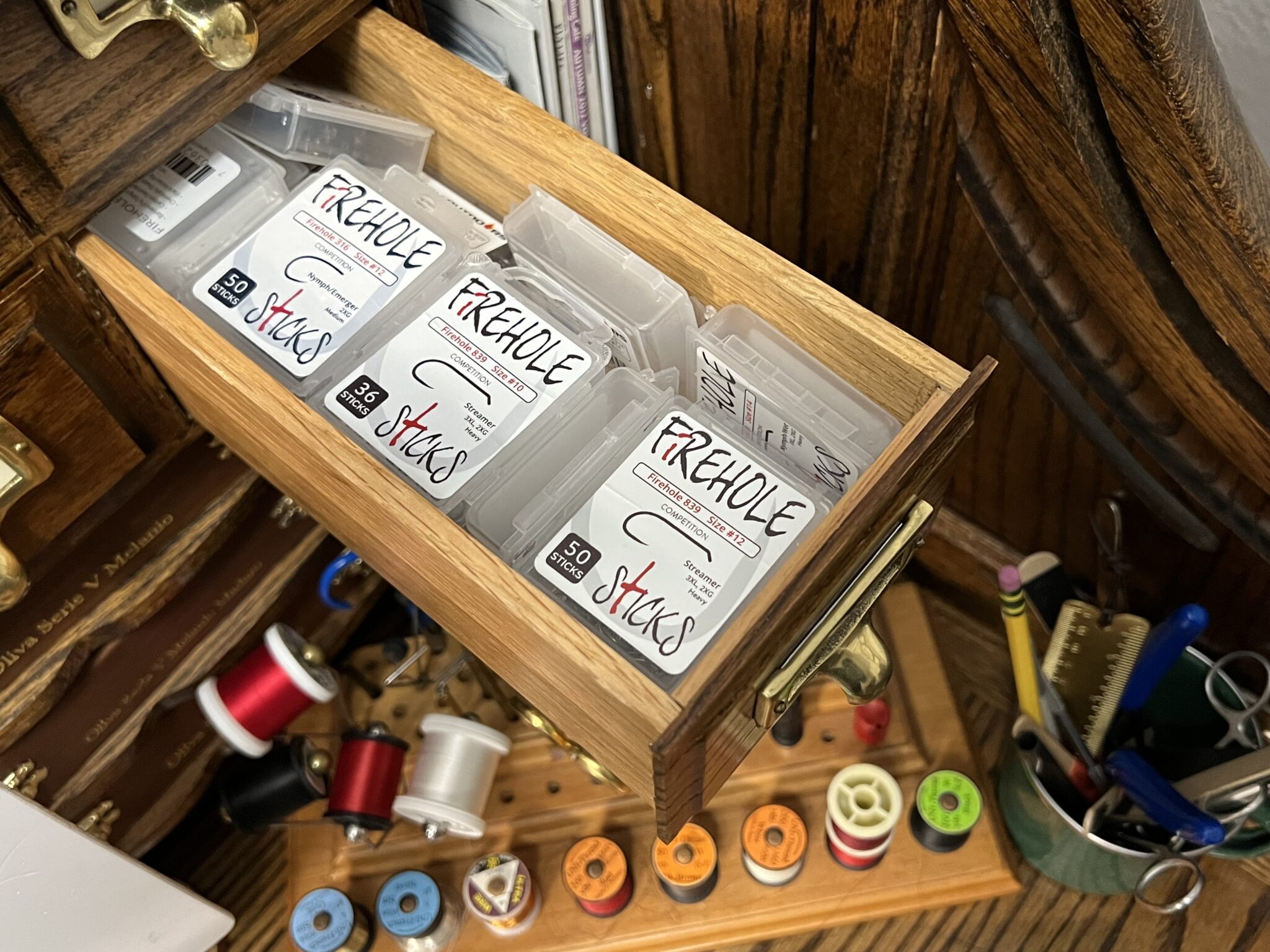
And the same with my line inventory. I like to make sure I always have a healthy supply of fluorocarbon line and tippet material on hand.
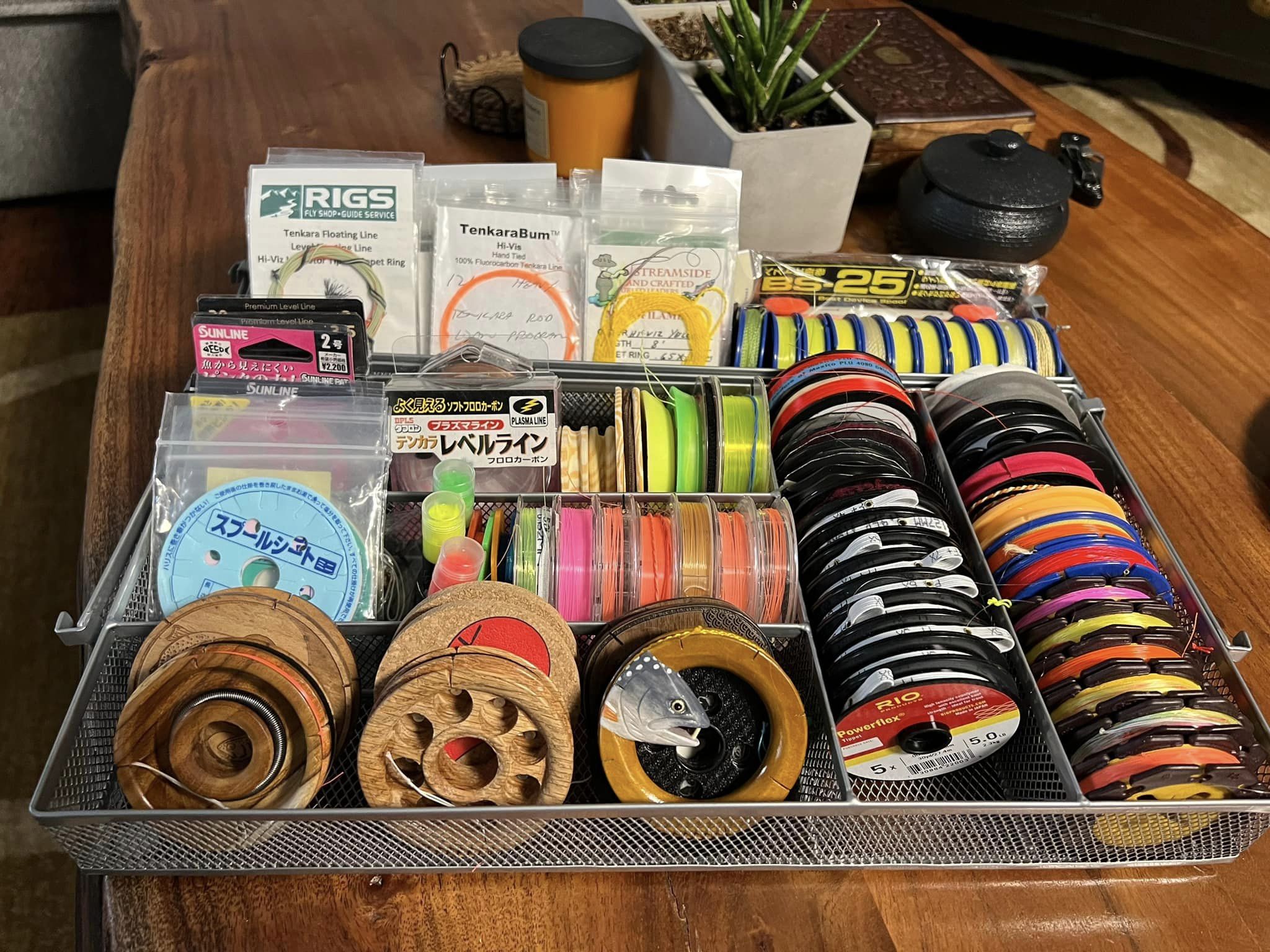
No inventory would be complete without going through my fly boxes and making a list of any of my go-to patterns that I need to tie to rebuild my arsenal.

Line Maintenance
I’m horrible about checking my lines for wear and tear. Once, I had a line snap on a snag (the line, not the tippet) and was baffled until I ran my hand along it and it felt like sandpaper. I realized that I probably had been fishing that line for at least 2 or 3 years.
So I’ve been going through my most-used spools and restringing them with fresh fluorocarbon. I use either Tenkara USA Fluorocarbon level line or Nissin PALS Tenkara level line, the line used by Tenkara no Oni. Most fluorocarbon level line is translucent, but lines such as these are opaque and for me, that really improves visibility.
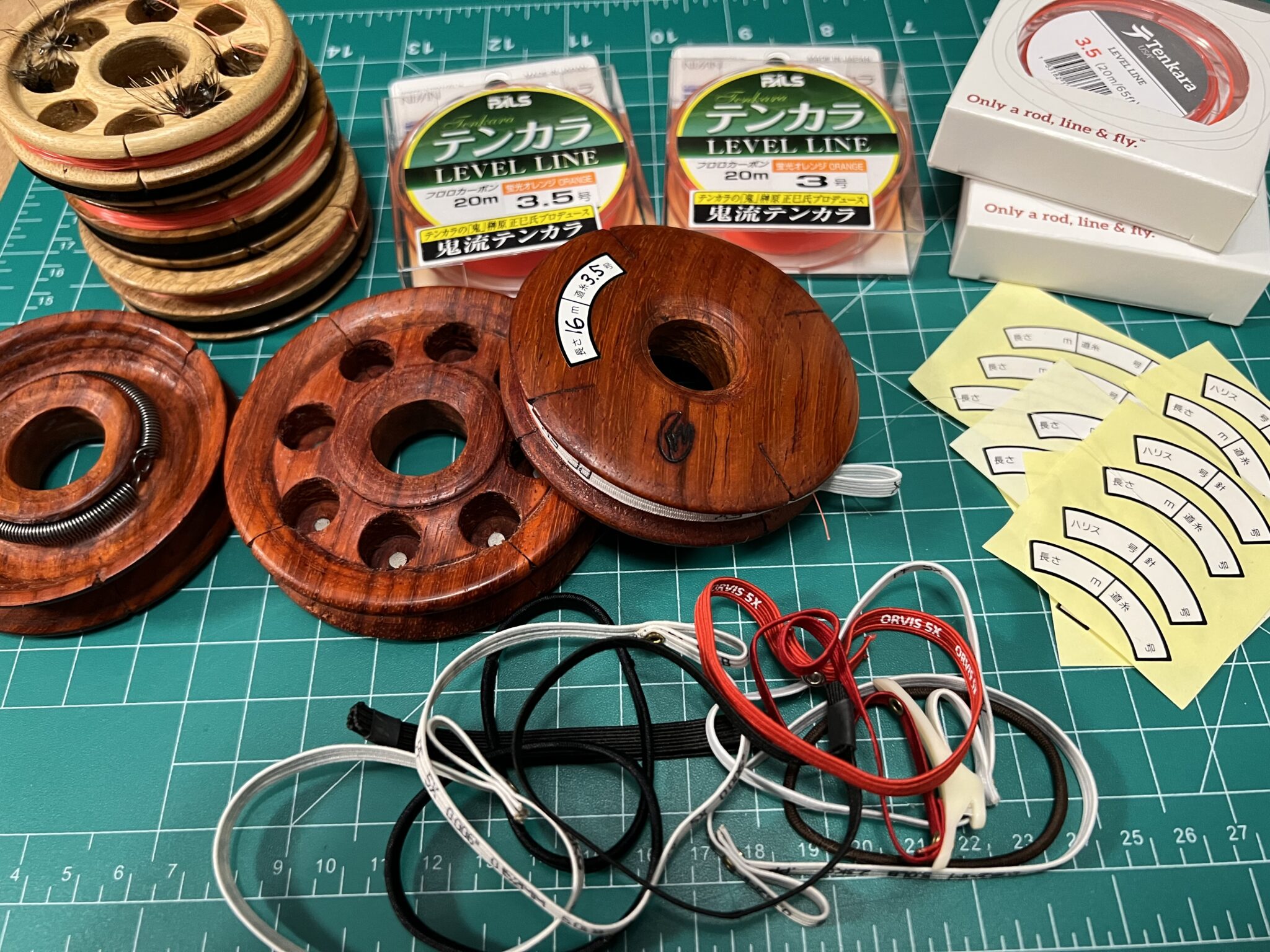
After they’re loaded up, I like to make sure each spool has a retainer (i.e. an old tippet spool band or hair tie I stole from my daughter) and label them with my most frequently used lengths and sizes. For most of my fishing, I use 13′, 16′, or 20′ lines. I rarely go shorter than the rod so I don’t carry a dedicated spool with a “short” line”. In those cases, I just cut of a shorter piece from the backup line in my pack and swap out the longer line.
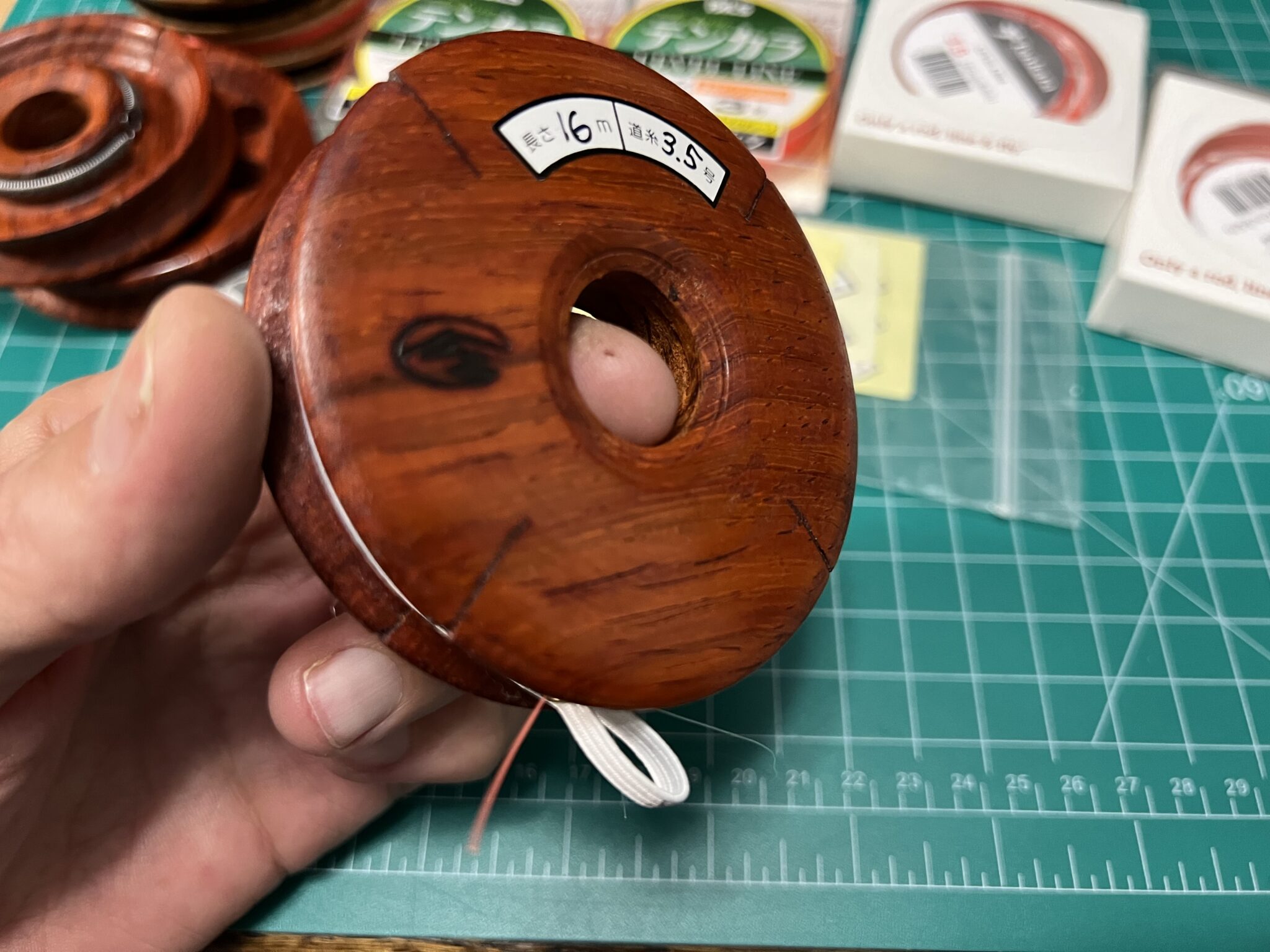

I know someone will ask, so all of the spools above are handmade by my friend Dennis Vander Houwen at Tenkara Path.
It’s also time to weed out old tippet and replace it with fresh spools from this decade. 2008? Really Jason?
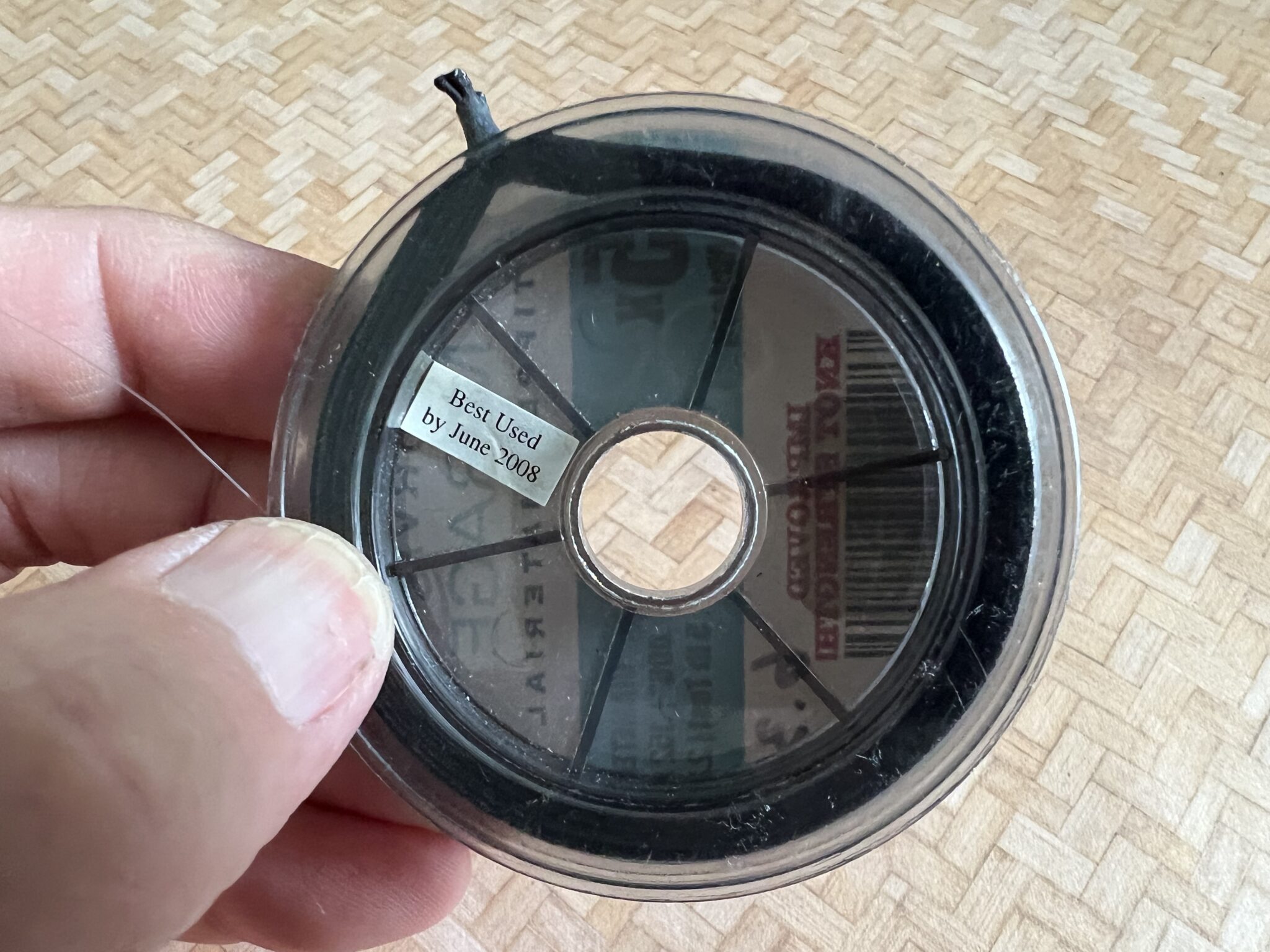
DIY
No matter the time of year, I’m always tinkering around with some DIY project or other. But the winter seems to be an especially creative time for me.
Hackle Lasso
I’ve invented a tool that makes it easier to tie off a tenkara fly in the front without trapping hackle with your whip finisher. It’s still in the prototype phase but it works fairly well so far. When it’s ready for its debut, I’ll post a video on how to make your own and how to use it.

Pack Hack
I wanted to figure out a way to prevent my Yonah Tenkara Simple chest pack from swinging forward when I lean over so it doesn’t obstruct landing a fish. After trying several different things, Occam’s Razor proved to be true and I settled on a simple safety pin added to the back of the pack that I can then pin to my shirt to tame it. Minimal, ultralight, and practical. No need for an annoying extra strap to go around my torso!

Net Leash
I recently got a new tamo from the Oni and needed a net leash for it. I tried some leashes I had from Daiwa and Shimano, but they attached to the net with a metal ring that would leave scratches on the hoop. And given how much I paid for it (don’t ask) I wasn’t about to let that happen! So I figured out a simple attachment using paracord. It won’t scratch the wood, it’s quiet, and it’s bright red with reflective material woven in so it will be easier to find when dropped (especially at night with a flashlight). I’ve tested out the ergonomics and it works perfectly!

Writing
Many people have told me they’re happy to see me writing again, and I am too. It was a long hiatus, but now that my health has improved substantially, I’m back at it with lots of new ideas.

In addition to the blog, I’m also writing a couple of articles for Tenkara Angler Magazine. It’s something I’ve meant to do for years, but always kept putting it off. But now, I’ve got two solid articles forthcoming so keep an eye out in the next few issues.
Something I don’t talk about often but actually consumes a fair amount of my time is website maintenance. I think a lot of people only see the end result of a post and never really consider how much work goes into it–not only the creative part like writing, editing, and taking photos, but also keeping the site running.
I had a major outage last month and it took a while to fix (as well as a few years off my life). While I was working on that, I made a few changes to the UX and design of the site which most people probably won’t even notice, but I think will ultimately provide a better experience.
Most people just see all this content pop up magically, not appreciating the fact that a lot of work went into it on the backend behind the scenes. But I think if a user has a good experience on a website, then they shouldn’t notice it. It should be logical, intuitive and seamless. The times you notice something are when something is broken, or poorly designed. Never when everything is working fine. So I gave the site a little tune-up while I was under the hood.
Other Projects
Fly Swap
I’m making it a point this year to participate more in tenkara-related events and fly swaps. I submitted a baker’s dozen of my Ichiban Kebari to the 2023 swap happening now. I asked not to have any flies sent back as my policy is that I only fish with flies I’ve tied myself. But I just wanted to contribute since this pattern isn’t readily available to buy unless you buy them from me (and they would not cheap).
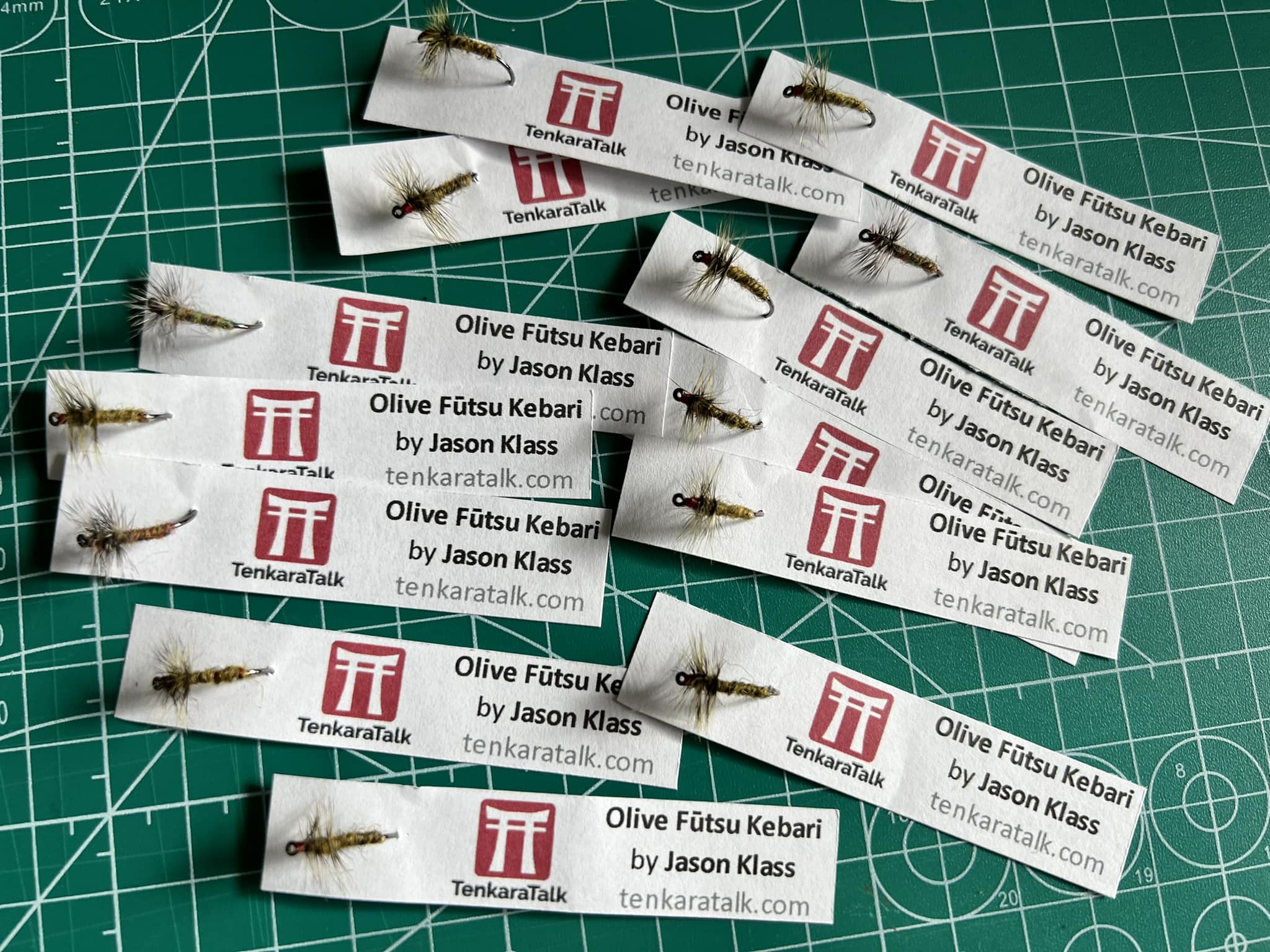
Framing Flies
I’m in the process of adding 4 new pieces to my growing collection of framed flies from prominent Japanese tenkara anglers. This time, patterns from Yuzo Sebata and Yoshikazu Fujioka. Two were finished but I had to send one back because all of the hackles were matted down (even though I explained to them them importance of fluffing them up after they’re mounted). So, three more are on the way and I’m struggling to figure out where to hang them. It might be time to move into a two-bedroom.
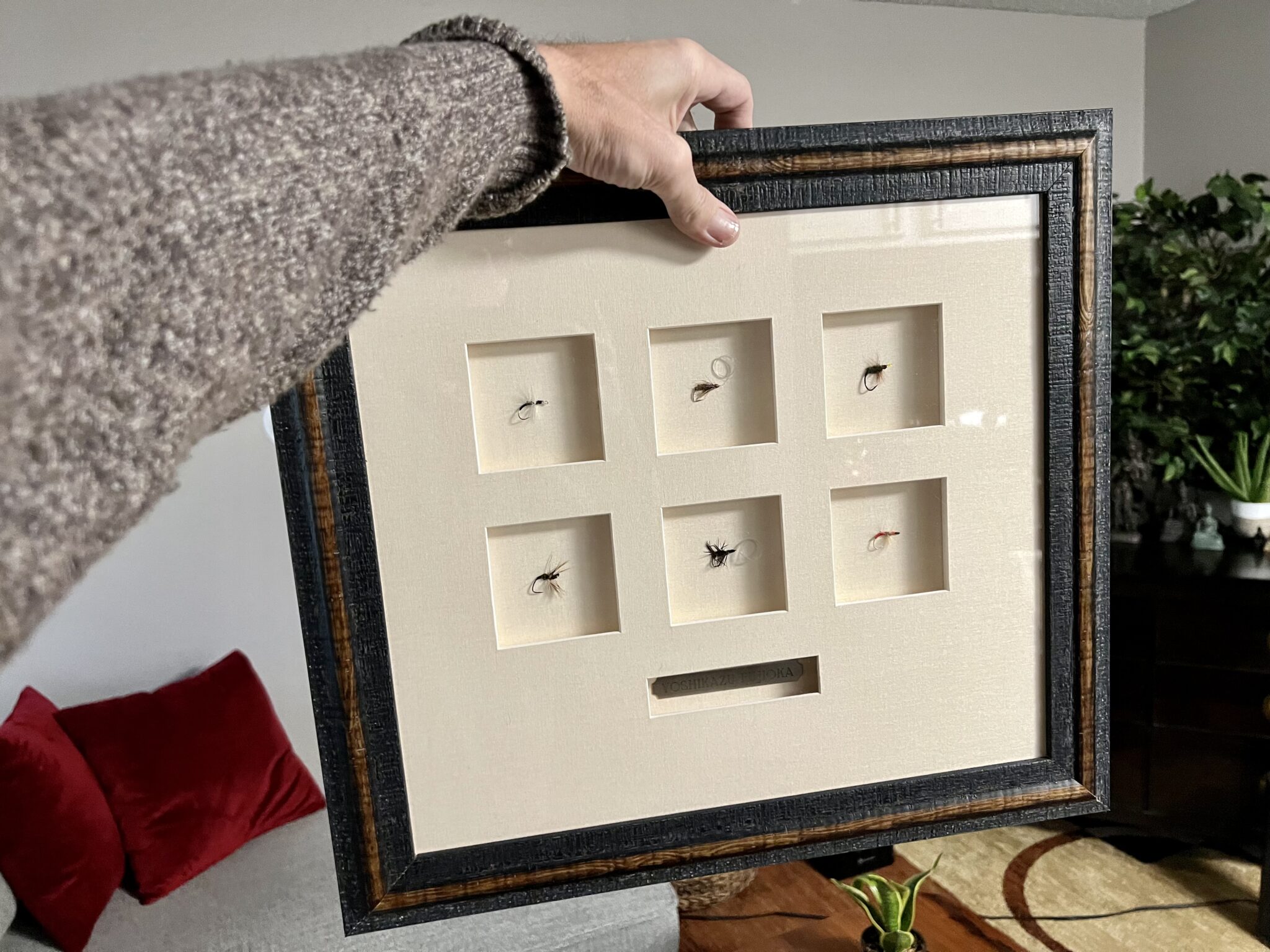

Designing Tenkara Swag
I’m coming out with a series of tenkara T-shirts soon. The designs are done and I’ve gotten some samples, but finding a good printer has been challenging. BTW, it’s NOT the T-shirt below. That’s just a joke. I’m not ready to show the actual designs yet.

After the launch of the T-shirts, I’ll have some other tenkara swag like new stickers, coasters, and more. I’m really excited to see some of my ideas come to life. Unfortunately, I have to fund everything myself so that’s why it will be slowly released in stages–the previous sales will be used to create the next item, and so on.
Doldrums can be fun!
These are just some of the tenkara-related things I’ve been working on during the cold spell. Just because you can’t fish, doesn’t mean you can’t still have fun. And I find that instead of surrendering a potentially boring winter, somehow, I manage to keep my mind occupied while improving my overall fishing system at the same time. It’s amazing to me how one idea leads to another and before you know it, you’ve got a litany of new things to experiment with or hack.








I love the hackle lasso! I’m looking forward to your info on the final version. Until then I’m going to mess around myself with it and see if I can get something that does the job. Thanks for the tips.
Hi Tristan, thanks. You’ve probably already reverse engineered it by now but I’ll try to get the video up in the next day or two.
Jason, doesn’t look like there has been any doldrums at your house. Thank you for the great article and inspirations. Looking forward to the video on the hackle lasso.
Thanks. When you see the video, please let me know how it could be improved. Like I said, it’s still a prototype.
Man, when you come out, you really come out! Glad your getting back in the world of Tenkara. You even make me feel better now. Take care my friend, wish they had some Tenkara shows here in the MidWest so we can see you walking around here!
Thanks Eugene! It’s great to be back to writing and tying flies.
Well, if there are no Midwest events, why don’t you start one? “If you build it, they will come …”
Looking forward to the laso post! As far as having/hosting a ” Mid-West Tenkara Fest”, well if you ever saw my tying bench, you would get a close look at my organizational skills! Think I will leave that to the experts. Will have to plan a trip out west to one, and buy you dinner, and solve all the world’s problems. Take care